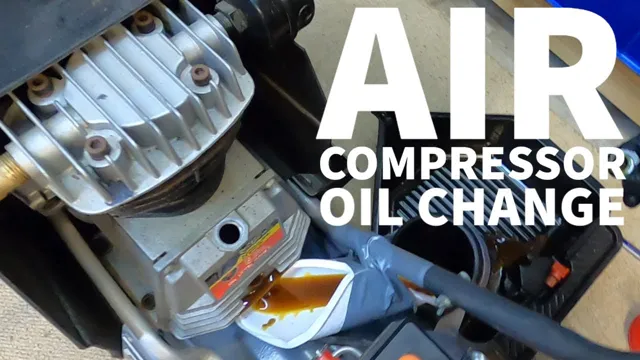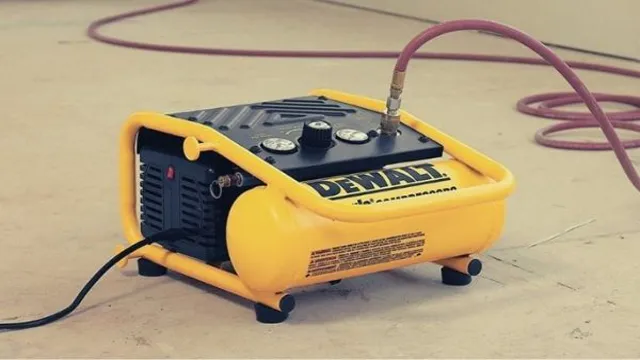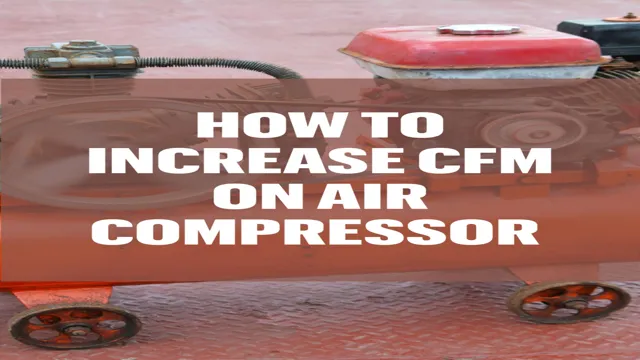How to Measure Air Compressor Fittings: A Comprehensive Guide to Accurate Measurement.

If you’re gearing up to work with an air compressor, you know that there are a lot of pieces to keep track of. One critical element is the air compressor fittings, which enable you to connect hoses, tools, and other components to the compressor. But how do you ensure you’re measuring the fittings correctly? Where do you even start? Fear not! In this guide, we’ll take you through the steps to accurately measure air compressor fittings, so you can work with confidence and precision.
Whether you’re new to the air compressor game or you’re a seasoned pro, read on to learn more.
Introduction
If you’re a DIY enthusiast, a professional mechanic, or a technician who uses air compressors for various tasks, then it’s essential that you understand how to measure air compressor fittings. The fittings play a crucial role in regulating pressure, connecting lines, and ensuring that the flow of air is unobstructed. To measure fittings, you’ll need to examine the size, thread count, and shape.
The size of the fitting determines its dimensions, and you can measure it using a caliper or a ruler. The thread count refers to the number of threads per inch and is essential for connecting fittings of the same size. The shape is another essential aspect to consider since it affects the fitting’s compatibility with the rest of the equipment.
So, by knowing how to measure air compressor fittings, you can make sure that you get the right fitting for your task without any compatibility issues.
Explanation of air compressor fittings
Air compressor fittings refer to the components that connect air tools or hoses to an air compressor. These fittings come in different shapes and sizes, and they are specifically designed to work with certain air tools and types of compressors. The most commonly used air compressor fittings are the quick-connect fittings, which enable easy and fast interchangeability of tools.
Other types of air compressor fittings include couplers, plugs, adapters, connectors, and reducers. When choosing air compressor fittings, it is important to consider factors such as the type and size of the tool, the air pressure, and the airflow requirements. By selecting the appropriate fittings for your compressor and air tools, you can ensure safe and efficient operation and avoid any problems that may affect the performance and longevity of your equipment.

Importance of measuring air compressor fittings
Air compressor fittings are crucial components for any air compressor system, regardless of the application. They connect hoses, pipes, and other equipment, allowing the compressed air to flow and deliver power to the intended device. Properly measuring air compressor fittings ensures that they fit securely and snugly, preventing leaks and promoting efficient operation.
Fittings come in different shapes, sizes, and materials, and choosing the right one can significantly impact performance and longevity. A poorly sized or misaligned fitting can cause air pressure fluctuations, increase energy consumption, and increase the risk of failure. Therefore, it’s essential to measure air compressor fittings accurately, considering factors such as thread size, connection type, and sealing method.
With correct measurements, you can ensure that your air compressor system runs smoothly and effectively, resulting in enhanced productivity and reduced maintenance costs.
Steps to Measure Air Compressor Fittings
If you’re wondering how to measure air compressor fittings, don’t worry, it’s easier than you might think. The first thing you’ll need to do is identify the type of fitting you have. There are four main types: NPT (National Pipe Thread), BSP (British Standard Pipe), JIC (Joint Industry Council), and DIN (Deutsche Industrial Norm).
Once you’ve figured out which type of fitting you have, you can use a caliper or a ruler to measure the diameter of the fitting’s threads. Keep in mind that some fittings may have tapered or straight threads, so be sure to measure accordingly. Another important factor to consider is whether your fitting is male or female.
Male fittings have external threads, while female fittings have internal threads. By determining the size, type, and gender of your fitting, you can easily find a compatible replacement or accessory. Overall, it’s important to have the right size and type of fitting for your air compressor to ensure safe and efficient operation.
Step 1: Identify the type of fitting
If you’re looking to measure your air compressor fittings, there are a few simple steps you can follow to ensure you get accurate results. The first step is identifying the type of fitting you have. This can be done by examining the shape and size of the fitting, as well as any markings or labels that may be present.
Once you have identified the fitting, you can move on to measuring the diameter of the fitting, which will help you determine the size of the hose you need. To do this, you can use a caliper or measuring tape to measure the distance across the widest part of the fitting. Remember to measure in both inches and millimeters to ensure you get the most accurate result.
By following these simple steps, you can get the right measurement for your air compressor fittings and ensure maximum efficiency and performance.
Step 2: Measure the thread size
When it comes to measuring air compressor fittings, there are a few steps you need to follow. Step two involves measuring the thread size, which is an important part of the process. The thread size refers to the diameter of the threads on the fitting, which helps determine its compatibility with other parts.
To measure the thread size accurately, you’ll need a thread gauge or a caliper. With a thread gauge, you can match the fitting’s threads to the gauge’s measurements to determine the size. With a caliper, you can measure the diameter of the threads directly.
It’s important to be as precise as possible when measuring the thread size, as even slight inaccuracies can lead to compatibility issues. Once you have the correct thread size, you’ll be able to find fittings that are compatible with your air compressor and get back to work.
Step 3: Measure the outside diameter of the fitting
Air compressor fittings are an essential part of any air tool setup. To properly measure fittings, there are a few simple steps you need to take. The first step is to identify the fitting style.
Once you know the fitting style, you can then move onto measuring the thread size. The next step is to measure the outside diameter of the fitting. This is important because it ensures that the fitting will fit securely into the receiving end of the air hose or tool.
To do this, simply use a caliper or ruler to measure the fitting’s outer diameter. It’s important to note that fittings come in a variety of sizes and styles, so it’s important to verify the exact measurements before purchasing. By taking the time to properly measure your air compressor fittings, you can ensure that they will fit correctly and perform as expected.
Step 4: Determine the fitting’s inside diameter
When it comes to measuring air compressor fittings, determining their inside diameter is crucial. To do so, you’ll need a caliper or measuring tape. Simply measure across the inside of the fitting from one end to the other, making sure to get an accurate reading.
This will give you the measurement in inches or millimeters, depending on your preference. It’s important to note that fittings can have different inside diameters depending on their type and purpose, so be sure to consult with the manufacturer or manual to ensure you’re measuring correctly. By accurately measuring the inside diameter of your air compressor fittings, you can ensure a tight and secure connection that will prevent any air leaks or accidents.
So, take the time to measure them properly to ensure the best performance.
Common Types of Air Compressor Fittings
If you want to connect an air tool to your compressor, you will need to have the right type of fitting. There are several common types of air compressor fittings, each with its unique design and features. To choose the right fitting, you must first understand the measurements involved.
When measuring fittings, it is crucial to consider the thread size, as well as the inside and outside diameter of the connector. Knowing this information will help you find the right match for your air compressor. The most common types of air compressor fittings include quick-connect fittings, couplers, plugs, and connectors.
Quick-connect fittings are easy to attach and detach and provide a secure seal. Couplers, on the other hand, are used to extend the reach of your compressor and are available in various sizes and shapes. Plugs are used for closing the open end of a connector, while connectors are used to connect two pieces of pipe with different diameters.
Make sure you know which type of fitting you need before beginning your project to avoid wasting time and money.
Quick-connect fittings
Quick-connect fittings are an essential component of any air compressor setup. These fittings help connect hoses, tools, and other accessories to your compressor with ease. One of the most common types of quick-connect fittings is the industrial interchange.
This fitting features a ball-bearing locking system that ensures a secure connection. Another popular type is the universal coupler, which is compatible with a variety of air tools. The Milton and Tru-Flate couplers are also prevalent in the market.
Each of these fittings has unique features that cater to specific applications, making it crucial to choose the appropriate fitting for your needs. Choosing the right quick-connect fitting will improve your compressor’s efficiency and ensure a hassle-free experience. So, take your time to research and select the perfect fitting that matches your requirements.
NPT fittings
NPT fittings are an essential part of air compression systems as they provide a secure and leak-free connection between various components. NPT stands for National Pipe Thread and refers to the standard used for tapered threads on pipe fittings in North America. There are a few common types of air compressor fittings, including the NPT male and female fittings, quick-connect fittings, and compression fittings.
NPT fittings are designed to screw into ports of corresponding size and shape and create a tight seal through threads that are oriented at an angle. They are used for applications that require high pressure and temperatures and are preferred for their durability and resistance to wear and tear. Whether you need to attach an air hose, pressure gauge, or regulator, NPT fittings can help you get the job done quickly and safely.
Compression fittings
Compression fittings are one of the most common types of air compressor fittings. They are used to connect two lengths of tubing together without the need for soldering or welding. Compression fittings work by compressing an O-ring or ferrule around the tubing to create a leak-proof seal.
One advantage of compression fittings is that they can be easily removed and reused, making them ideal for applications where frequent changes or modifications are required. Some common types of compression fittings include flare fittings, straight thread fittings, and inverted flare fittings. These fittings come in a variety of materials, including brass, stainless steel, and plastic, to suit different applications.
Overall, compression fittings are a versatile and practical option for connecting air compressor tubing.
Conclusion
Measuring air compressor fittings may seem like a daunting task, but with a little bit of know-how and the right tools, it can be tackled with ease. Remember, the size and type of fitting can make or break your compressed air system’s effectiveness. So, take the time to measure your fittings correctly, and you’ll be on your way to a more efficient and well-run operation.
And who knows, you might impress your fellow DIYers with your newfound fitting measuring skills. Just remember to use the right measuring tape, be gentle with your threads, and measure twice to make sure your fitting is right on the money. Happy measuring!”
Importance of properly measuring air compressor fittings for optimal performance and safety.
When it comes to air compressors, choosing the right fittings is crucial for optimal performance and safety. With so many fittings available on the market, it can be challenging to know which one is best for your compressor. However, understanding the common types of air compressor fittings can help make your decision easier.
Some of the most popular types of fittings include quick connect couplers, hose barbs, and air line accessories. Quick connect couplers are easy to use and make it simple to switch between different tools. Hose barbs are ideal for connecting hoses to compressors and work well with a variety of hose materials.
Air line accessories, such as blow guns and tire inflators, are crucial for a range of tasks and can be connected to your compressor with the right fitting. Ultimately, selecting the proper air compressor fitting is essential to ensure that your tools operate correctly, and you remain safe while using them.
FAQs
What specific tools are needed to measure air compressor fittings?
To measure air compressor fittings, you will need a caliper or a micrometer to measure the diameter of the fitting.
How do I know if a fitting is the right size for my air compressor?
The best way to determine the right size fitting for your air compressor is to consult the manufacturer’s specifications or user manual. You can also measure the diameter of the fitting and compare it to the specifications provided by the manufacturer.
Can I use a fitting that is slightly larger or smaller than what is recommended for my air compressor?
No, it is important to use the specified fitting size for your air compressor to prevent leaks, damage to the compressor, and potential safety hazards.
What materials are air compressor fittings typically made of?
Air compressor fittings are commonly made of brass, steel, or aluminum.
Is it necessary to use Teflon tape or pipe dope on air compressor fittings?
Yes, it is recommended to use either Teflon tape or pipe dope on air compressor fittings to ensure a proper seal and prevent leaks.
How often should I replace my air compressor fittings?
It is recommended to replace air compressor fittings every few years or if they show signs of wear or damage, such as corrosion or cracks.
Can I use the same fittings for different air compressors?
It depends on the specific air compressors and their fittings. It is best to consult the manufacturer’s specifications or a professional if unsure.








